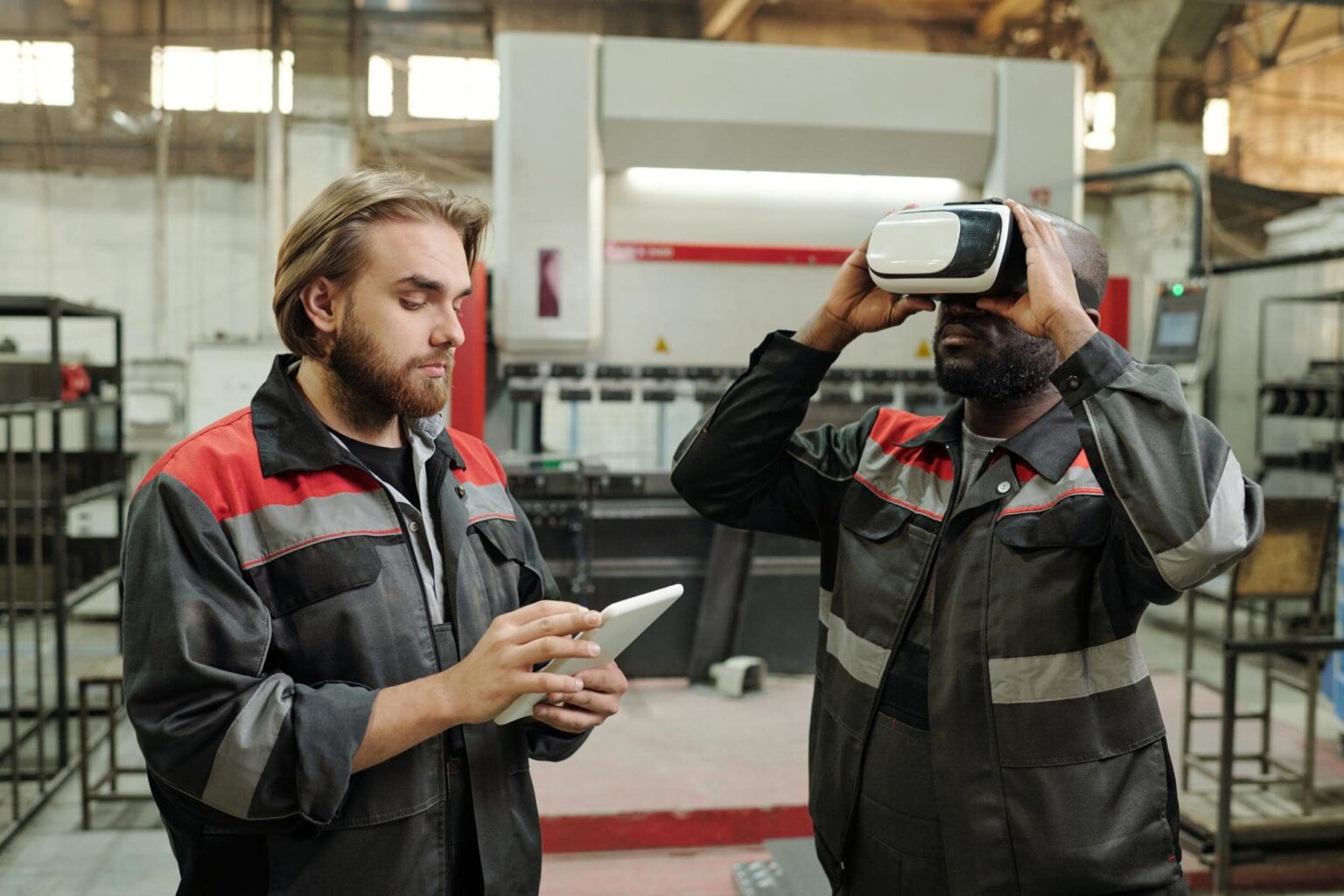Augmented Reality (AR) is revolutionizing the manufacturing industry by streamlining production processes and enhancing training and maintenance activities. AR overlays digital information onto the physical environment, providing real-time guidance, visualizations, and instructions to workers. Here are key ways AR is transforming manufacturing:
- Assembly and Production: AR assists workers in assembly and production tasks by providing step-by-step instructions overlaid onto the physical workspace. This eliminates the need for paper-based manuals or complex training programs. AR can highlight parts, display animations, and indicate correct assembly sequences, reducing errors, improving efficiency, and accelerating the learning curve for new employees.
- Maintenance and Repair: AR can support maintenance and repair activities by providing technicians with real-time information, troubleshooting guides, and visual overlays. Technicians wearing AR-enabled devices can see virtual annotations, 3D models, and diagnostic information overlaid on the equipment they are working on. This improves accuracy, reduces downtime, and enables faster and more efficient repairs.
- Quality Control and Inspection: AR can aid in quality control and inspection processes by providing real-time visual cues and measurements. By overlaying digital guidelines and specifications onto physical objects, inspectors can easily identify defects, compare measurements, and ensure compliance with quality standards. AR can highlight anomalies, guide inspectors to critical areas, and streamline inspection workflows.
- Training and Onboarding: AR is transforming training and onboarding processes by providing immersive and interactive experiences. New employees can use AR to learn about complex machinery, processes, and safety protocols. AR simulations can replicate real-world scenarios, allowing trainees to practice without the risk of damaging equipment. AR-based training programs can accelerate learning, reduce costs, and improve knowledge retention.
- Remote Collaboration: AR enables remote collaboration among geographically dispersed teams. With AR-enabled devices, workers can share real-time video feeds, annotations, and instructions. Remote experts can guide on-site personnel, provide assistance, and collaborate on complex tasks without physical presence. This capability improves collaboration, reduces travel costs, and expedites problem-solving.
- Design and Prototyping: AR facilitates design and prototyping processes by visualizing virtual models in the physical environment. Engineers and designers can view and manipulate 3D models overlaid onto the physical space, allowing them to assess designs, test ergonomics, and make real-time modifications. AR streamlines design iterations, enhances communication, and accelerates the prototyping phase.
- Equipment and Asset Tracking: AR can be used for real-time equipment and asset tracking within manufacturing facilities. By using AR-enabled devices, workers can scan QR codes or markers on equipment to access relevant information, maintenance history, and usage data. This simplifies inventory management, maintenance scheduling, and asset tracking processes.
- Remote Training and Support: AR enables remote training and support for field technicians and service personnel. By wearing AR devices, technicians can receive real-time guidance from remote experts who can see what they see. Remote experts can provide visual instructions, annotate the technician’s view, and guide them through complex procedures. This improves efficiency, reduces service time, and eliminates the need for expert travel.
AR is transforming manufacturing by improving productivity, accuracy, and safety. By leveraging digital overlays and real-time guidance, AR streamlines production processes, enhances worker training, and enables efficient maintenance and repair activities. As AR technology continues to advance, its potential to revolutionize the manufacturing industry will only grow.



